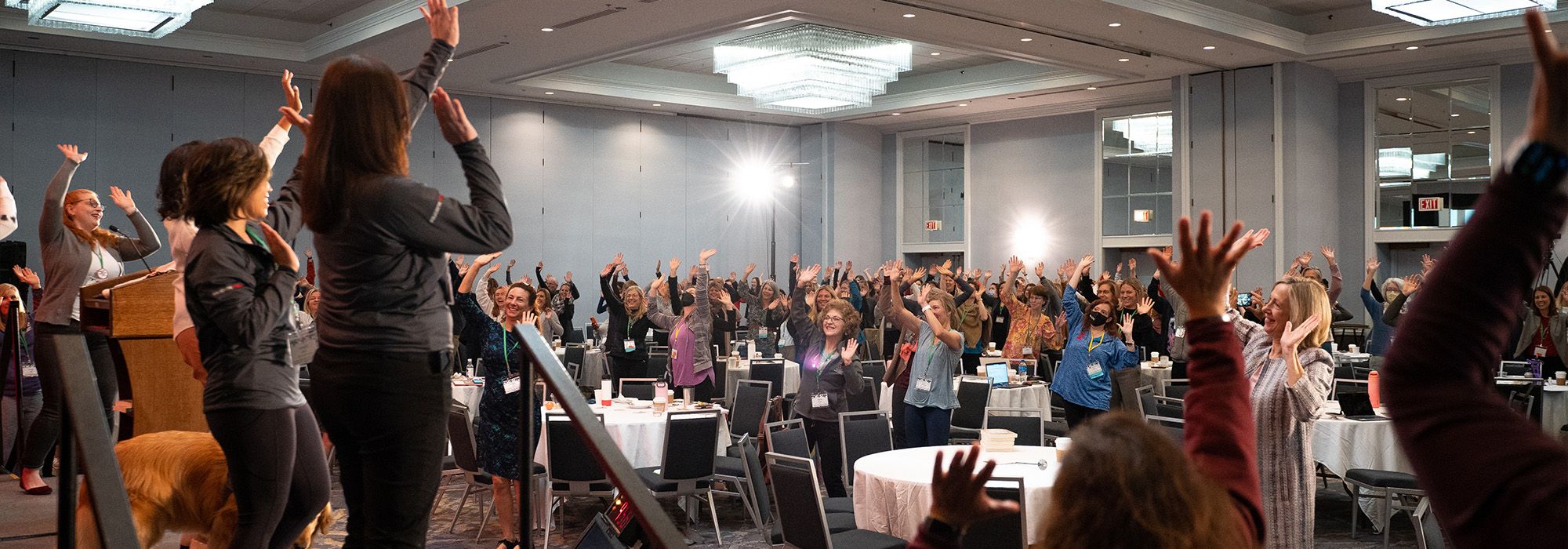
Well-being Begins with Us
by Susan Neale, with Kelsey Bonacci, Gregory Greenblatt and Ava Huelskamp
The third biennial National Summit on Promoting Well-being and Resilience in Healthcare Professionals
At the third biennial National Summit on Promoting Well-being and Resilience in Healthcare Professionals held in Columbus, Ohio, in September, more than 300 attendees from 35 states, Washington D.C., Sweden and New Zealand gathered to address the national epidemic of clinician burnout, suicide and depression. Hosted by six of The Ohio State University’s health science colleges, the College of Social Work and The Ohio State University Wexner Medical Center (OSUWMC) with support from the National Academy of Medicine Action Collaborative on Clinician Well-being and Resilience and the American Nurses Association Healthy Nurse, Healthy Nation Program and co-chaired by the deans of the College of Nursing (Bernadette Mazurek Melnyk, PhD, APRN-CNP, FNAP, FAANP, FAAN) and the College of Medicine (Carol Bradford, MD, MS, FACS), the summit featured 39 sessions, 28 poster presentations and a host of internationally renowned speakers all focused on the same goal: promoting the mental and physical well-being of healthcare workers.
Billed as “not your typical conference,” the summit is known for its emphasis on self-care. Attendees dressed in “exercise casual” clothes, enjoyed healthy cuisine and had frequent opportunities to get up and move, even dance. Therapy dogs and virtual reality exercise equipment in the lobby as well as sessions on yoga, high-intensity interval training and Urban Zen helped attendees rest and rejuvenate while they went about the serious work of gathering evidence-based resources, information and strategies to combat workplace burnout and shape wellness cultures.
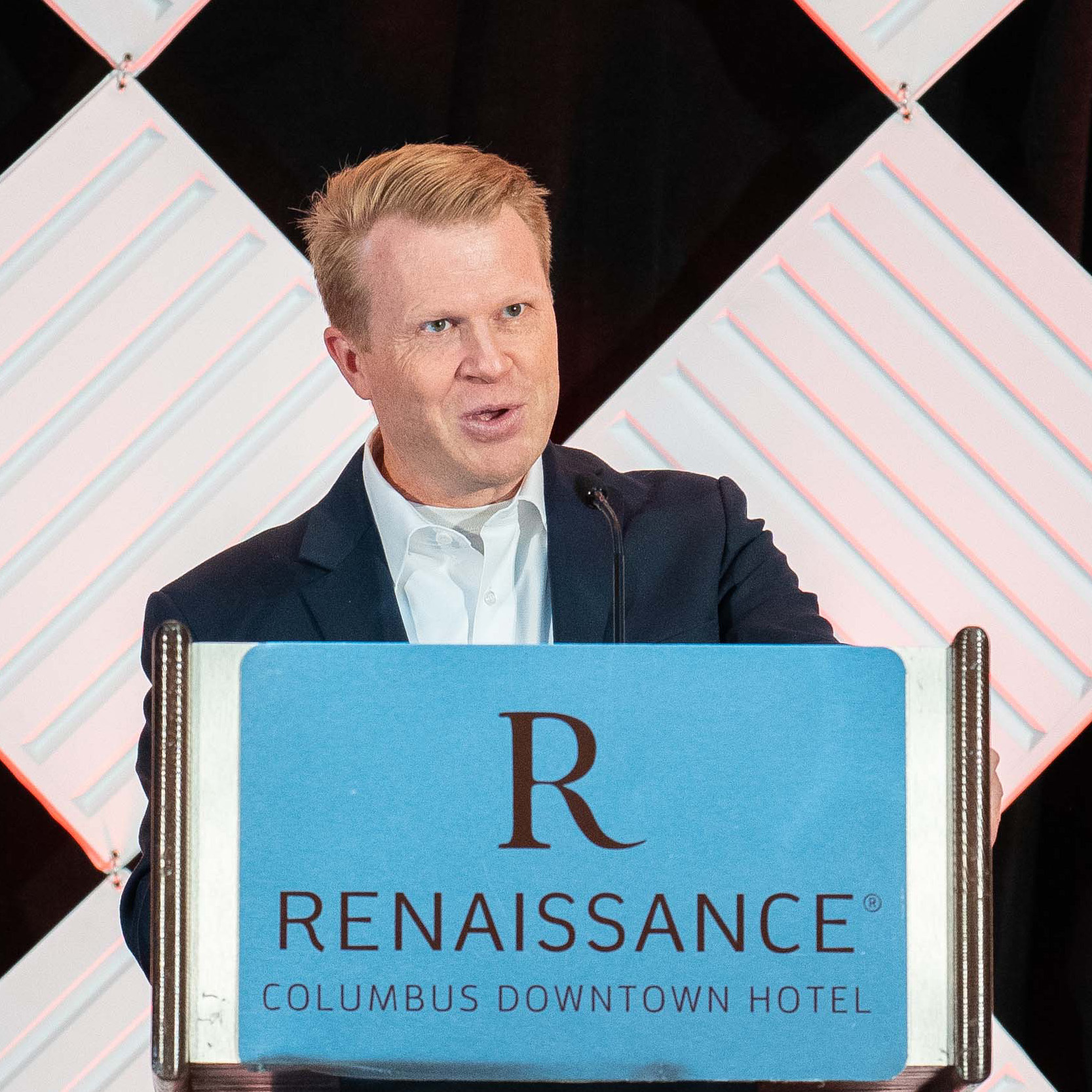 “We really need to swing the pendulum from sick and crisis care to wellness and prevention, not only for our clinicians, but for the people of the United States,” Melnyk said at the welcoming ceremony. Tait Shanafelt, MD, director of Stanford WellMD Center and Chief Wellness Officer of Stanford Medicine, concurred that over the past twenty years, “We’ve evolved from an era of ignorance of clinician distress,” to one of concern for clinician well-being. Shanafelt, who is known internationally for his research on clinician well-being and its implications for quality of care and has helped hundreds of organizations and their leaders prevent clinician burnout and promote well-being, was presented this year’s National Award for Outstanding Leadership in Support of Clinician Well-being.
“We really need to swing the pendulum from sick and crisis care to wellness and prevention, not only for our clinicians, but for the people of the United States,” Melnyk said at the welcoming ceremony. Tait Shanafelt, MD, director of Stanford WellMD Center and Chief Wellness Officer of Stanford Medicine, concurred that over the past twenty years, “We’ve evolved from an era of ignorance of clinician distress,” to one of concern for clinician well-being. Shanafelt, who is known internationally for his research on clinician well-being and its implications for quality of care and has helped hundreds of organizations and their leaders prevent clinician burnout and promote well-being, was presented this year’s National Award for Outstanding Leadership in Support of Clinician Well-being.
“We have mounting evidence that interventions work,” Shanafelt said. “We’ve seen many of our organizations commit to change.” He offered inspiration and encouragement. “All of you are change agents, trying to alter this narrative and create a better practice environment … Don’t be discouraged. I would encourage you to build a coalition. Partner with your leaders, ignore the cynics, and just keep on with the work.” He reminded listeners to take care of themselves in the process as well.
Know your workstyle and advocate for yourself
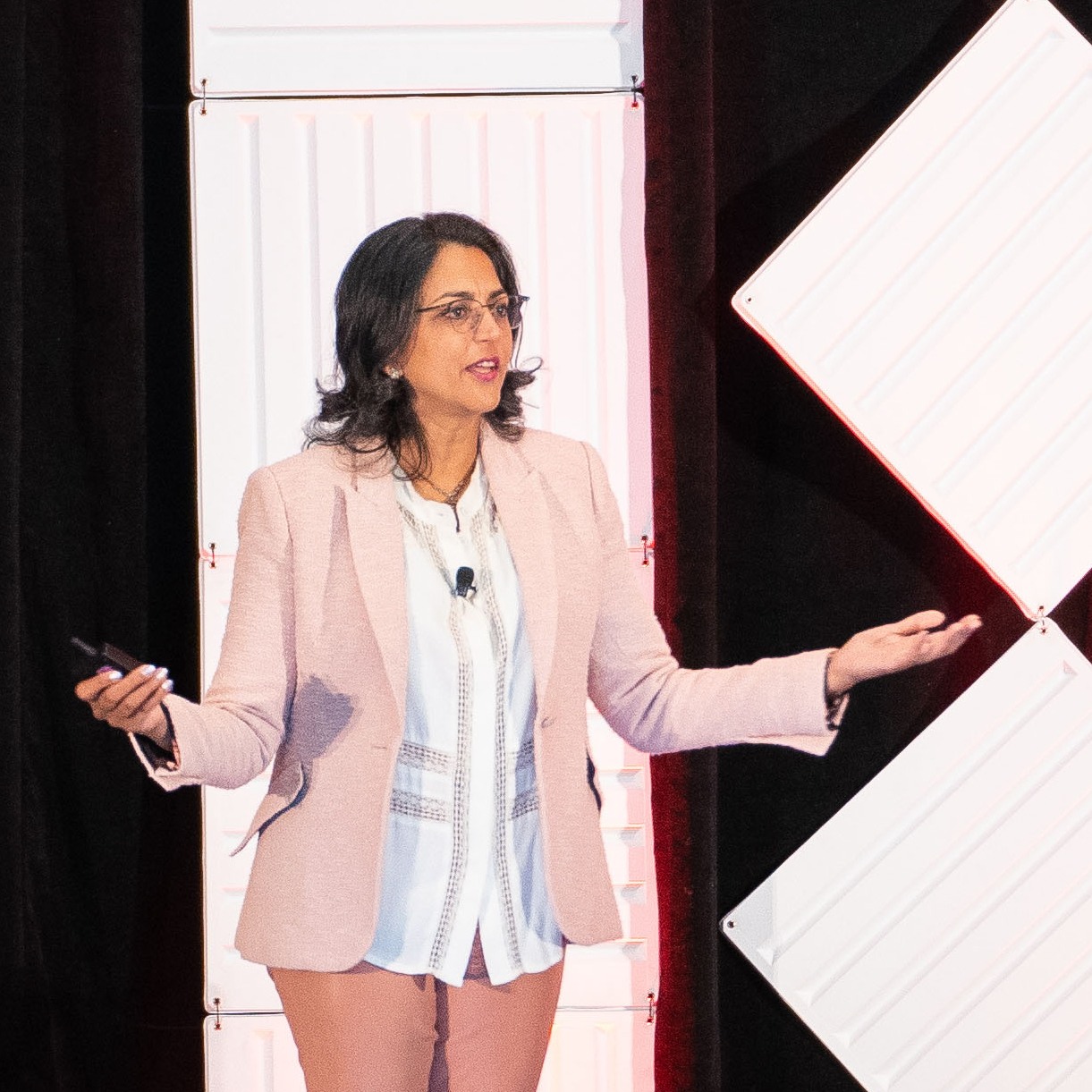 “When I was in school, no one talked about this,” keynote speaker Neha Sangwan, MD, said. “We have come a long way.” When Sangwan, author of Talk Rx, experienced burnout as a physician, she thought her only option was to try to power through. Then she took a stress leave that ultimately changed her life. Sangwan is now devoted to empowering healthcare professionals and other organizational leaders to focus on self-care. In her keynote speech, “Self-care in Healthcare,” Sangwan explained how to identify your own work style to prevent burnout.
“When I was in school, no one talked about this,” keynote speaker Neha Sangwan, MD, said. “We have come a long way.” When Sangwan, author of Talk Rx, experienced burnout as a physician, she thought her only option was to try to power through. Then she took a stress leave that ultimately changed her life. Sangwan is now devoted to empowering healthcare professionals and other organizational leaders to focus on self-care. In her keynote speech, “Self-care in Healthcare,” Sangwan explained how to identify your own work style to prevent burnout.
Drawing from Talk Rx, Sangwan identified four common work styles: “doers” are fast paced but fear losing control, while “thinkers” are slow paced but fear being unprepared. The spontaneous, innovative “seers” enjoy autonomy and fear being trapped, while “feelers” create community and fear rejection.
“Being aware of your strengths and weaknesses can help you to assess yourself and prevent burnout,” she said, urging healthcare workers to advocate for their needs in the workplace rather than trying to do it all.
“The human body is like a fine-tuned machine,” Sangwan noted. “When you override your body’s signals, that is when you need help.” Healthcare workers often experience burnout because they feel that they must be resilient and endure uplevels of stress. However, Sangwan emphasized, “Resilience does not mean that you must endure through something. It is about advocating for yourself and influencing change to improve your life.”
Support from national organizations
Recognizing that we have a public health crisis of clinician burnout and suicide, the National Academy of Medicine launched its action collaborative on clinician well-being and resilience in 2017. The collaborative works to create and support long-term culture change needed to further clinician well-being through advising others, listening to healthcare workers and working alongside health systems. Kimber Bogard, PhD, deputy executive officer for NAM’s programs, unveiled their National Plan for Health Workforce Well-being, set to launch in October, which will help organizations integrate wellness into their strategic plans.
Holly Carpenter, senior policy advisor at ANA’s Nursing Practice and Work Environment Department, spoke on behalf of another clinician well-being initiative: ANA’s Healthy Nurse Healthy Nation. With over 300,000 participants, they support nurses to “help them make their best wellness decisions and go forth on their individual wellness journey.”
Present leaders with cost-effectiveness data
In the plenary session, “Making the business case for clinician health and well-being,” presenters talked about practical ways to implement wellness into corporate structure and reasons why institutions cannot afford to ignore their employees’ mental health.
Melnyk pointed out that because burnout is related to medical errors, it is costly and dangerous not only for clinicians but for patients and healthcare systems as well. Melnyk detailed Ohio State’s holistic, evidence-based approach to wellness for employees and students.
“We save the university millions of dollars because of our wellness strategy,” she said. When speaking to leadership about change, she advised bringing “evidence and emotional stories” to the table.
Kevin D. Hopkins, MD, primary care medical director of Cleveland Clinic Community Care (CCC), pointed out that according to a recent poll, from 2020 to 2021, burnout among physicians increased from 38% to 63%, and many indicated that they would not pick healthcare as a career again. Hopkins noted that while systemic change can be slow to implement, “when it comes to interventions that actually make a profound difference on burnout, systems changes have the most profound effect.”
Steven Strongwater, MD, president and CEO of Atrius Health, emphasized the importance of leadership buy-in. “The return-on-investment argument hinges on turnover,” he said. Leadership listened at his organization when the argument was made that “we will lose more people by not implementing changes.”
Work with other healthcare professions to support change
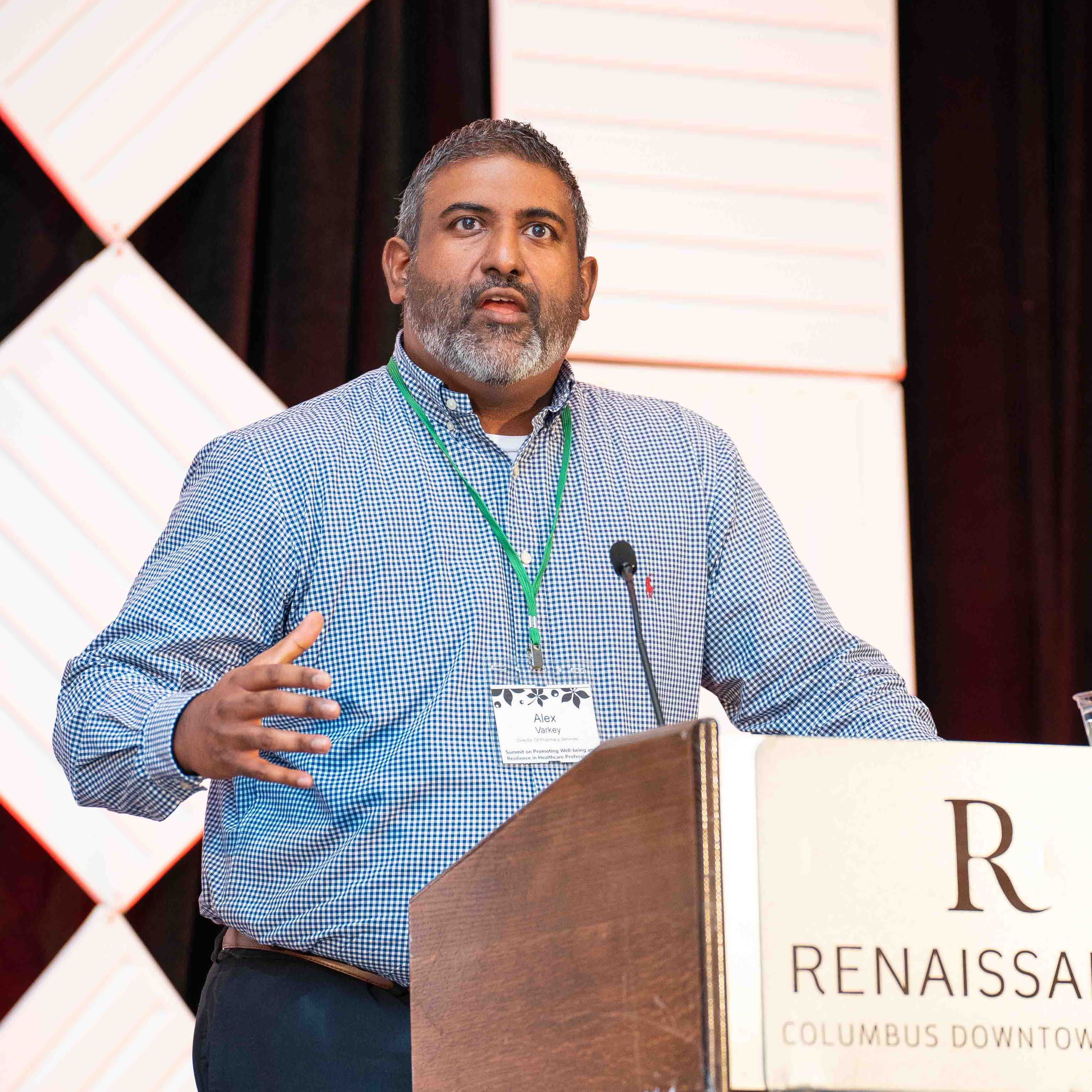 Endnote speaker Alex C. Varkey, PharmD, MS, FAPhA, detailed the unique challenges and workplace pressures in the pharmacy profession. Citing a study of the pharmacy workforce before and after the onset of the COVID-19 pandemic, Varkey commented, “You can see the emotional exhaustion and depersonalization.”
Endnote speaker Alex C. Varkey, PharmD, MS, FAPhA, detailed the unique challenges and workplace pressures in the pharmacy profession. Citing a study of the pharmacy workforce before and after the onset of the COVID-19 pandemic, Varkey commented, “You can see the emotional exhaustion and depersonalization.”
“Burnout causes biologic changes in the brain, including decreased ability to focus, decreased motor control and decreased short-term and long-term memory,” Varkey pointed out, and that is dangerous both for pharmacists and those whom they serve.
COVID-19 has highlighted that pharmacy services is an integral component of our public health infrastructure. However, while the nation depended on pharmacies to deliver tests, vaccines and medication during this crisis, no additional budget materialized for extra workers in the pharmacy, leading to long hours and stressful work conditions. A further stress: People coming to the pharmacy often don’t view it as a visit to a healthcare professional, Varkey said; rather, they see it as an errand, like picking up fast food. Meanwhile, provider dependence on clinical pharmacy services continues to increase as the types and uses of available drugs multiply rapidly.
Reduce mental health stigma at the systems level
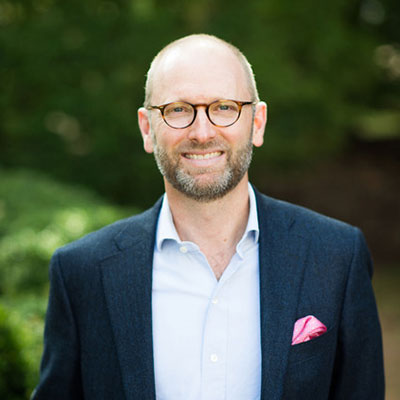 President and Co-Founder of the Dr. Lorna Breen Heroes Foundation, J. Corey Feist, JD, MBA, is passionate about catalyzing change in the healthcare industry, specifically in terms of burnout of the healthcare workforce. Feist created the foundation after his sister-in-law, emergency medicine physician Lorna Breen, MD, committed suicide in New York City in the summer of 2020. In his keynote speech, “From Awareness to Action: the Dr. Lorna Breen Heroes’ Foundation,” Feist told her story. Breen, a dedicated physician working in the COVID-19 ward in New York during the onset of the pandemic, began to struggle with her mental health following consecutive 15- to 18-hour shifts. “She called us and said, ‘This is going to end my career. My colleagues are going to be able to recognize that I can’t keep up,’” Feist said.
President and Co-Founder of the Dr. Lorna Breen Heroes Foundation, J. Corey Feist, JD, MBA, is passionate about catalyzing change in the healthcare industry, specifically in terms of burnout of the healthcare workforce. Feist created the foundation after his sister-in-law, emergency medicine physician Lorna Breen, MD, committed suicide in New York City in the summer of 2020. In his keynote speech, “From Awareness to Action: the Dr. Lorna Breen Heroes’ Foundation,” Feist told her story. Breen, a dedicated physician working in the COVID-19 ward in New York during the onset of the pandemic, began to struggle with her mental health following consecutive 15- to 18-hour shifts. “She called us and said, ‘This is going to end my career. My colleagues are going to be able to recognize that I can’t keep up,’” Feist said.
Feist pointed out that not all people experiencing burnout are at risk for suicide, but that when clinical depression and burnout overlap, there is a greatly increased suicide risk. Feist believes reducing burnout starts with communication and creating an open dialogue for healthcare workers about mental health. “One of the things we know is that just talking about it can have an unbelievable impact. You never know who needs to hear that message.” Leadership and culture need to come together to remove barriers and “develop health access for our healthcare workforce,” Feist added. Among its many systems-level initiatives, the Breen Foundation has created a toolkit for healthcare facilities to remove mental health bias and intrusive questions from the credentialing process.
The “Workplace Wellness and Suicide Prevention” panel that followed and included Feist discussed the alarmingly high rate of suicide amongst healthcare workers and presented personal anecdotes on their connection to this cause. They agreed that systemic changes to healthcare can be made to reduce clinician suicide and that the stigma surrounding mental health must be reduced. Christine Yu Moutier, MD, passionately closed the panel by adding, “We need to add mental health as a part of health, period.”
Uplift each other with kindness
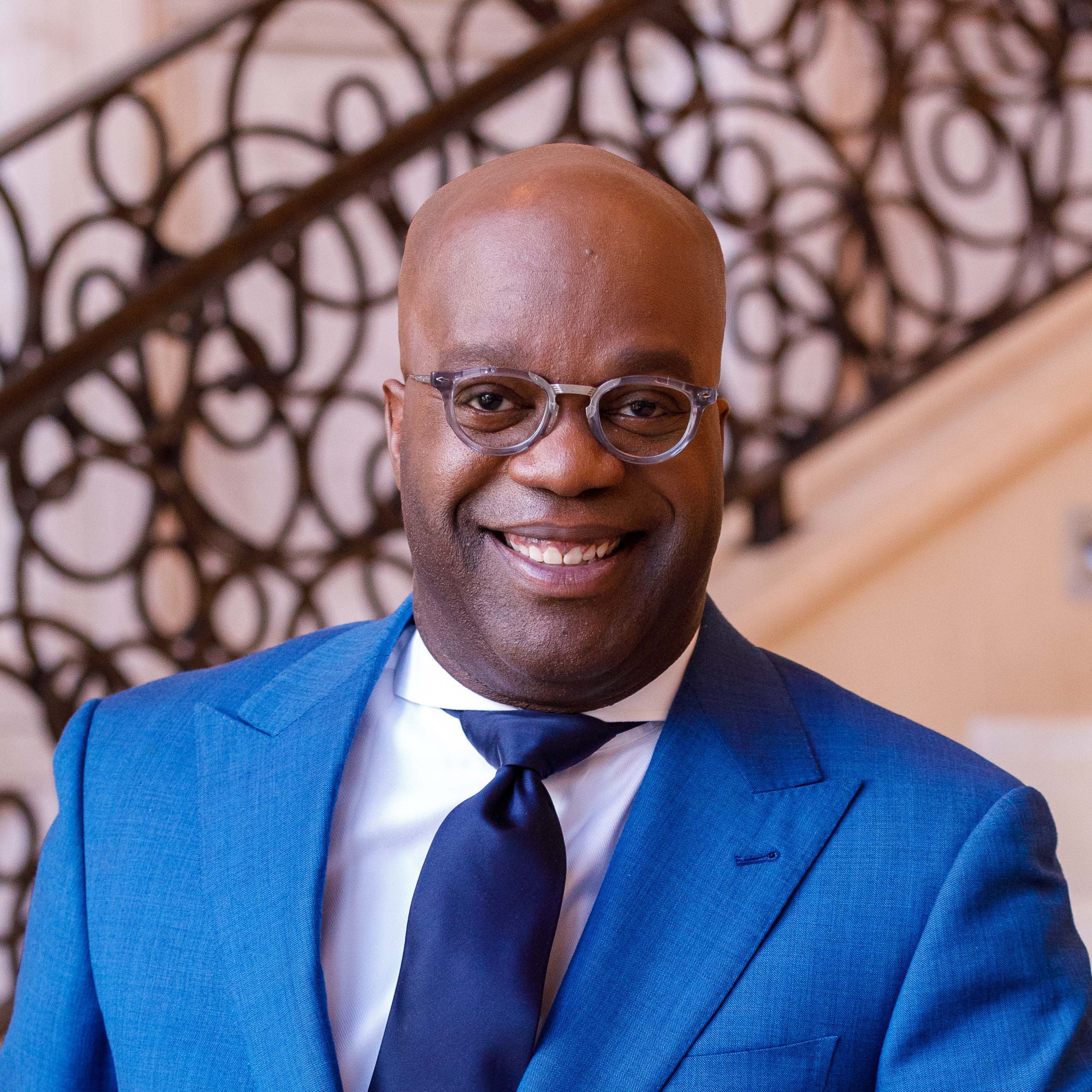 Motivational speaker Simon T. Bailey brought inspiration to the close of the summit. “Humans need to be seen, to be valued and to be heard,” he pointed out. “There is a healing presence in this wellness work.” When we invest in putting care back into healthcare, “this work goes beyond us: it is for generations to come.” Bailey asked participants to support each other in their journey forward, working on dreams spurred by what they had learned at the summit. We look forward to seeing everyone’s progress on those dreams at the next Clinician Well-being Summit in 2024!
Motivational speaker Simon T. Bailey brought inspiration to the close of the summit. “Humans need to be seen, to be valued and to be heard,” he pointed out. “There is a healing presence in this wellness work.” When we invest in putting care back into healthcare, “this work goes beyond us: it is for generations to come.” Bailey asked participants to support each other in their journey forward, working on dreams spurred by what they had learned at the summit. We look forward to seeing everyone’s progress on those dreams at the next Clinician Well-being Summit in 2024!
In this issue
- All in It for the Same Goal: PhDs and DNPs Collaborate
- Celebrating Margaret Graham
- Bringing XR to the Classroom
- Jane E. Heminger Hall Opens
- Impact of Giving
- Well-being Begins with Us
- Rita Pickler: Asking the Right Questions
- New Designation Recognizes EBP Excellence
- Experience Nursing Overseas
- Sam Warren Innovates
- Da'na Langford and the Village of Healing
- Meet OSU Spidey
